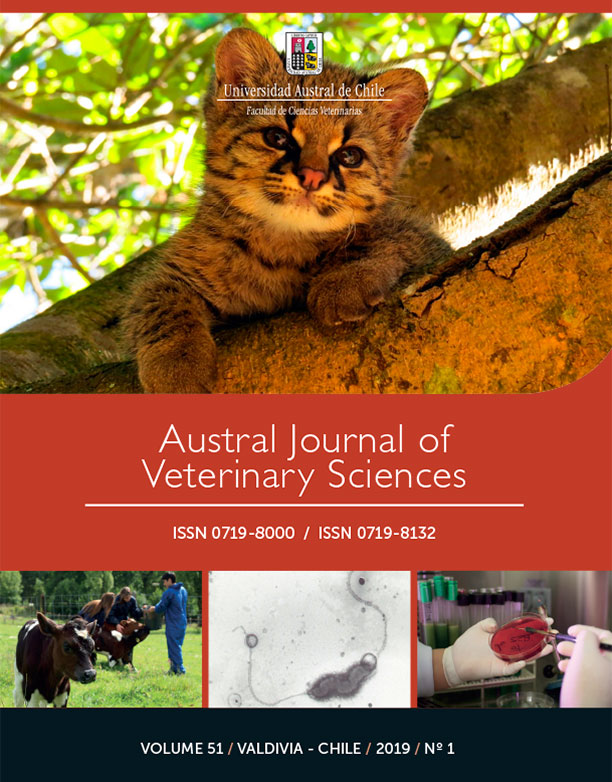Site and extent of digestion of nitrogen compounds and organic matter in steers fed a finishing diet with dried distillers grains plus solubles supplemented with urea
Contenido principal del artículo
Resumen
Four Holstein steers (266 ± 13 kg) with ruminal and duodenal cannulae were used to evaluate the effect of inclusion of different levels of urea (0%, 0.4%, 0.8% and 1.2%) in a steam-flaked, corn-based finishing diet containing dried distillers grains plus solubles (DDGS) on the site and extent of N compounds and organic matter (OM) digestion, and on the ruminal N-NH3 and blood concentrations of urea nitrogen. Increasing the urea levels linearly decreased the OM flow to the duodenum (P<0.04) and increased the total N and non-ammoniacal N flow to the duodenum (P<0.01), which resulted from linear increases in the flow of microbial N and NH3-N (P<0.01) without affecting the feed residual N flow (P≥0.47). Increasing the urea levels linearly increased ruminal digestion of OM and dietary N (P≤0.03), and decreased protein efficiency (P<0.01) without affecting microbial efficiency. The urea supplementation did not affect post-ruminal digestion. Urea supplementation linearly increased (P<0.01) total tract digestion of N compounds without affecting total tract digestion of OM. Ruminal pH averaged 6.09 ± 0.03 and was not affected (P≥0.97) by the inclusion of urea. Ruminal NH3-N concentration increased with urea supplementation (linear component, P<0.01). The same effect was observed for blood urea concentrations and plasma urea (P<0.01). On the basis of the results observed here, urea can be incorporated in finishing corn-based diets that include DDGS. However, this must done carefully to avoid exceeding the RDP concentration in the diets in order to optimise ruminal fermentation and reduce the risk of high N excretion in the faeces. This is relevant when higher levels of DDGS are included in the diets (i.e. 30%).

